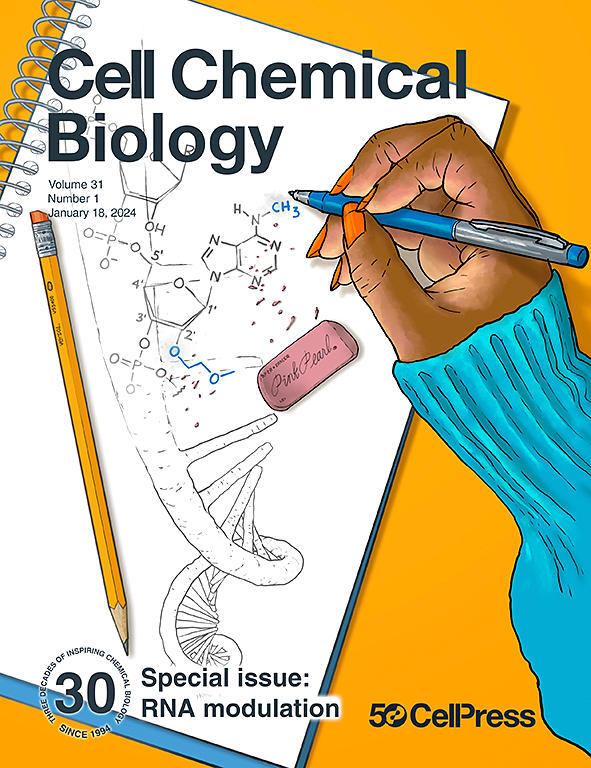从细胞器的角度来说:破解细胞清理的密码
IF 7.2
1区 生物学
Q1 BIOCHEMISTRY & MOLECULAR BIOLOGY
引用次数: 0
摘要
细胞器吞噬受体以前已经报道过,但其功能的潜在机制尚不清楚。在最近一期的《自然细胞生物学》(Nature Cell Biology)上,rudinsky等人证明了受体的内在无序区(idr)作为可互换的模块代码起作用,驱动细胞器分裂。这为探索细胞器吞噬受体功能的未来模型提供了见解。本文章由计算机程序翻译,如有差异,请以英文原文为准。
Organelle-ly speaking: Cracking the code of cellular clean-up
Organellophagy receptors have been reported previously, but the underlying mechanisms of their function remain unclear. In a recent issue of Nature Cell Biology, Rudinskiy et al. demonstrated that the intrinsically disordered regions (IDRs) of the receptors function as interchangeable modular codes, driving organelle fragmentation. This provides insights for the exploration of future models of organellophagy receptor function.
求助全文
通过发布文献求助,成功后即可免费获取论文全文。
去求助
来源期刊

Cell Chemical Biology
Biochemistry, Genetics and Molecular Biology-Molecular Medicine
CiteScore
14.70
自引率
2.30%
发文量
143
期刊介绍:
Cell Chemical Biology, a Cell Press journal established in 1994 as Chemistry & Biology, focuses on publishing crucial advances in chemical biology research with broad appeal to our diverse community, spanning basic scientists to clinicians. Pioneering investigations at the chemistry-biology interface, the journal fosters collaboration between these disciplines. We encourage submissions providing significant conceptual advancements of broad interest across chemical, biological, clinical, and related fields. Particularly sought are articles utilizing chemical tools to perturb, visualize, and measure biological systems, offering unique insights into molecular mechanisms, disease biology, and therapeutics.
 求助内容:
求助内容: 应助结果提醒方式:
应助结果提醒方式:


